Dark Tourism in Lithuania
Learning Lithuania's history from The Hill of Crosses and Vilnius's KGB Prison
Our second day in Lithuania was one of those vacation days you know will be tight for time, but you can’t bear to give up anything on your to-do list.
We woke up early in Klaipedia, yanked down the not-quite-dry laundry hanging from every hangable surface in the 1-room rental flat (it was our trip’s first washing machine), and piled into the car.
We followed the GPS for a bit more than two hours out into the middle of nowhere, where we parked by the side of the road and made our way to the Hill of Crosses.
When we arrived at 9am, there were no other visitors. (A half hour later, when we left, several cars were parked near ours.) We followed a pathway lined with a trickle of crosses that quickly became a river, then burgeoned into a sea of crosses and statues all draped with even more mini-crosses and strands of rosary beads.
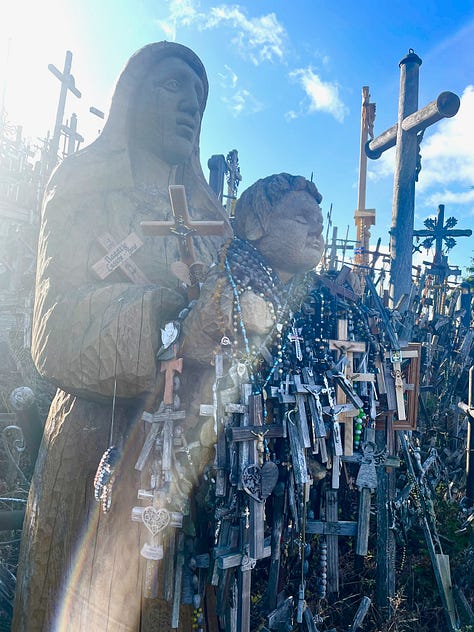
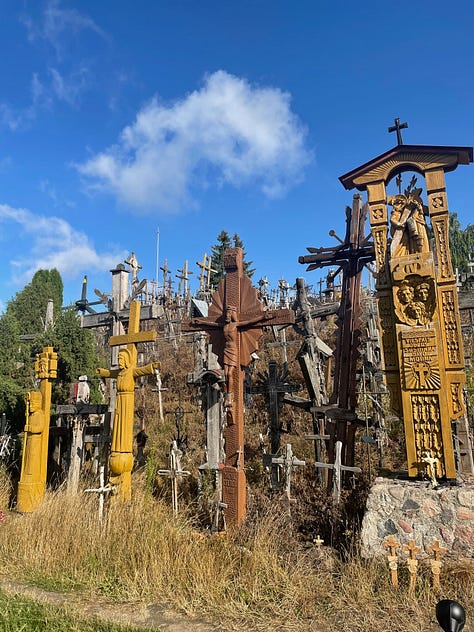

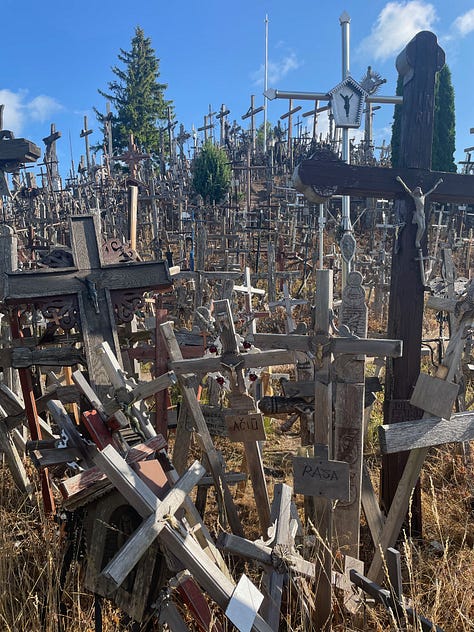

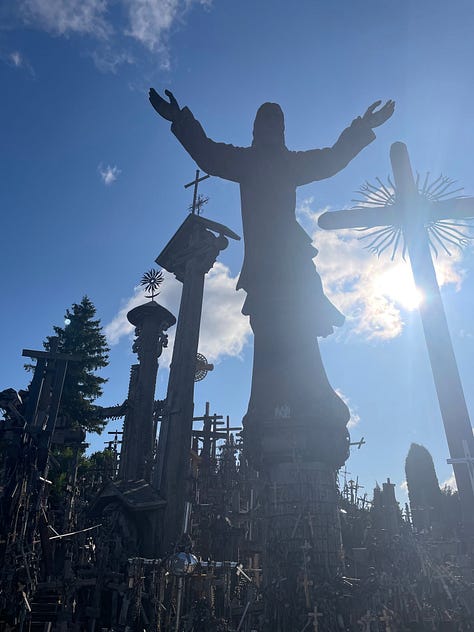
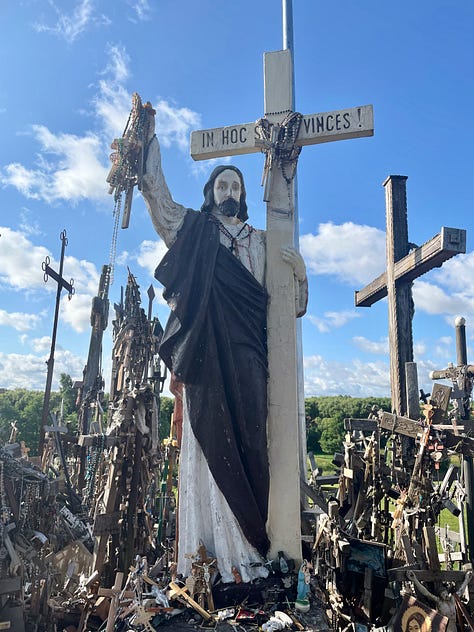
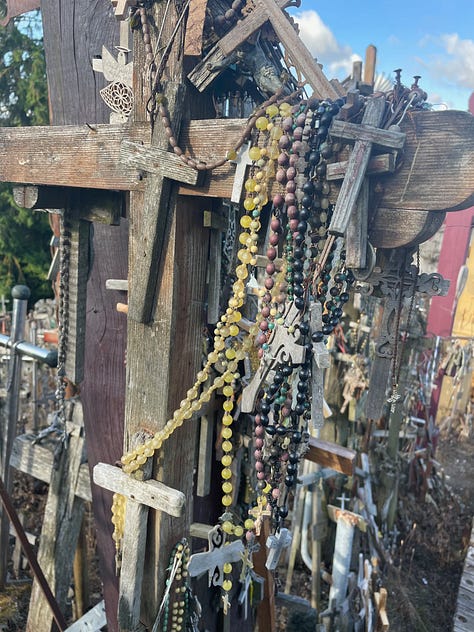

It was a gorgeous morning, blue skies with a slight chill in the air. But the sunny atmosphere was marred by the sound of chainsaws coming from the far side of the hill. I climbed the steps to the top, and crossed over to see two guys clearing between crosses with weed-whackers. In the sunshine, the Hill of Crosses didn’t feel creepy…just a little strange. But I closed my eyes and let myself imagine for a moment what it would be like to be there at night. The sound of the weed-whackers shifted from annoying to menacing, and I admitted that being there at night would most probably be terrifying.
I had read about the Hill of Crosses when I was searching for weird things to do in the Baltics. The Hill of Witches came up on the same page, making me wonder, What is it with Lithuanians and their creepy hill-themed sites?
But when I researched the history, I went from thinking of it as a creepy goth site drawing dark tourists with its weirdness to realizing that it was a monument to the spirit of the Lithuanian people encapsulating the story of their recent past.
In 1831 and 1863 there were failed uprisings against the occupying Russians by Lithuania, Poland, and surrounding countries. The families of slain rebels whose bodies could not be found began placing crosses on the hill, which had once been a fort. Catholic pilgrims carried on the tradition of leaving crosses there. In the 1800s over 9000 crosses were counted.
In 1918, Lithuania declared its independence after occupation by Russia and Germany. But the country was once again occupied by the Soviet Union in 1940, then by Nazi Germany, then again by the Soviets in 1944. During these years, people came to the hill to pray for independence. And during the next 46 years, until 1990, people kept coming and kept bringing crosses.
Under the Soviets, Lithuanians suffered religious persecution. So taking a cross to the hill became a sign of independence and opposition to the Soviet regime. The KGB realized this and tried to destroy the landmark. Thus began the Battle of the Crosses. (This is not a real thing. I just made it up. But the name makes for good visuals, right?)
The KGB bulldozed the hill three times. Each time people returned with more crosses. It was rumored the Soviets were going to flood the area. They blocked the access road and both the KGB and the Soviet army guarded the hill. Anyone sneaking a cross onto the land risked fines or imprisonment. But every night Lithuanians brought more crosses. (And statues of the Virgin Mary, rosaries, effigies, and carvings of Lithuanian patriots.)
So when Lithuania broke away from the Soviet Union in 1990 and once again declared its independence, the number of crosses exploded. The count went from 55,000 in 1990 to 100,000 in 2006. The hill now stands as a testament to the Lithuanian people’s determination to preserve their religious freedom and national independence.
The kids and I had nothing like a cross or rosary in the car. Only food wrappers and maps. But I wish I had dug through the trunk and gotten a fossil or two for us to leave…just as tokens. Later, I read about the different techniques of cross-crafting, one of which involves making a cross out of twigs and tying the pieces together with grass. Lithuanian cross-crafting is actually listed by UNESCO as an example of intangible cultural heritage. (Like the flags I found on the Curonian Spit, about which I will tell you one of these days.)
The kids got bored after about twenty minutes. (I know…HOW?) So I wandered a bit by myself and took this last video before we piled into the car and booked it the 3 hours to Vilnius. However, we did not book hard enough, because we arrived at the car rental place at 11:45 instead of 10am, and I had to pay for an entire extra day. Which I was not happy about. But didn’t find that out until I got back to Paris. While we were in Vilnius, I was still hopeful that the almost-two-hours would be overlooked.
So in a completely unjustified jolly mood, we took a cab to the bus station, bought tickets for the next bus to Bialystok, Poland, and with 4 hours to spare, decided to explore Vilnius. (Travel tip: you can take a rental car through the 3 Baltic states with no problem, but fees are huge if you take it into Poland or another non-Baltic country. Thus the bus over the border, and a re-renting of a car once in Poland.)
We wandered through the middle of town, oohed and aahed over the pretty buildings on the main street, then looked for lunch. We browsed menus outside a few establishments, and the mention of dumplings had my mouth watering for good, local food. But there was nothing on any of these “local cuisine” menus that my hyper-sensitive autistic kids could eat. And after the Riga Tavern Fiasco (which ended up in me eating “Mexican pizza” in one of Europe’s loveliest capitals), I didn’t feel like sacrificing my tastebuds once again. So I chose a gorgeous little restaurant, gave the kids a credit card, pointed to the pizza parlor next door, and said, “See you in an hour.”
This is what I had:
Cepelinai (zeppelin-shaped potato dumplings) with some kind of creamy sauce. I didn’t even know what the sauce was. I didn’t care. It was in my mouth and I was happy. So happy I almost cried. I had an alcohol-free beer (which was delicious) and sat by myself and looked around at people and buildings and ordered an espresso and was quiet and calm, and let me tell you, it was BLISS. (I love my kids. But, man, do I treasure my alone time.)
I can only imagine Tibor and Tallie felt the same way eating their margarita pizzas next door, because when we all got together we were smiling and fulfilled and ready for our next adventure.
We had 2 hours left, so decided to go to the nearby Museum of Occupations and Freedom Fights, which is a former KGB prison exhibiting photos and artifacts from the almost 50-year Soviet occupation.
The ediface began as a government building (1890) and was used as such by each government that took over, including being Gestapo headquarters in 1941. From 1944 to 1990 it was the KGB offices and prison.
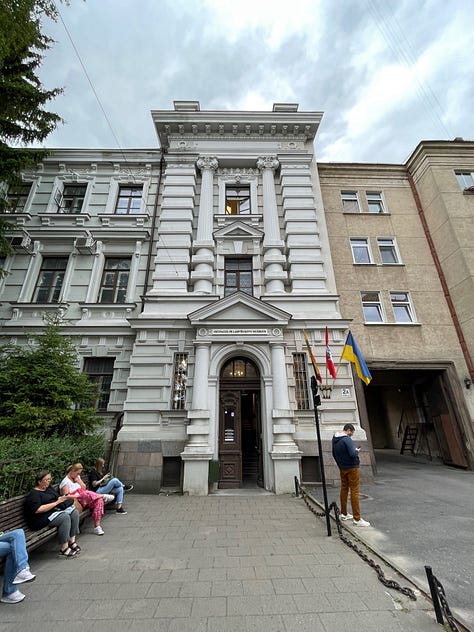
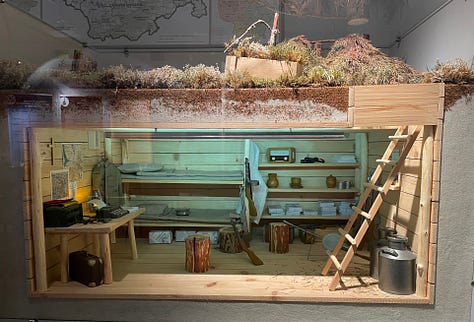

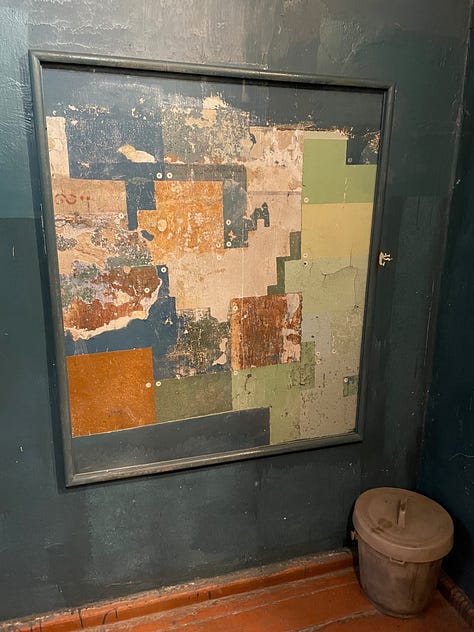
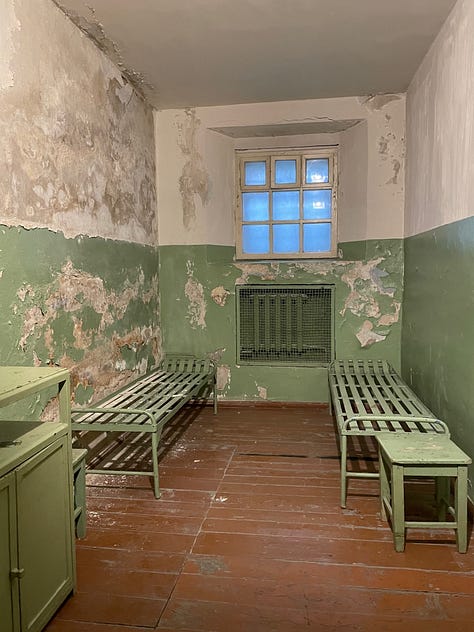
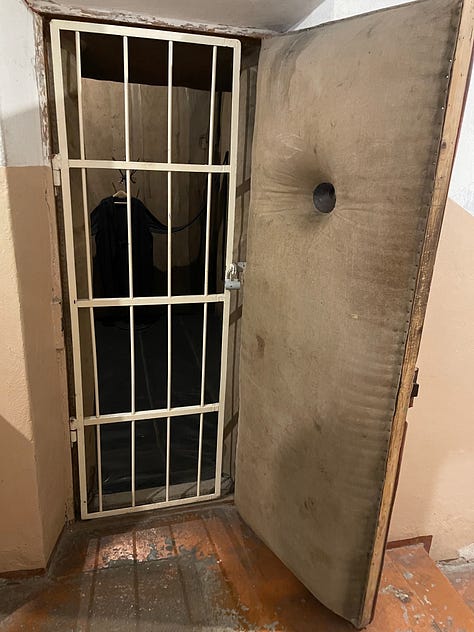
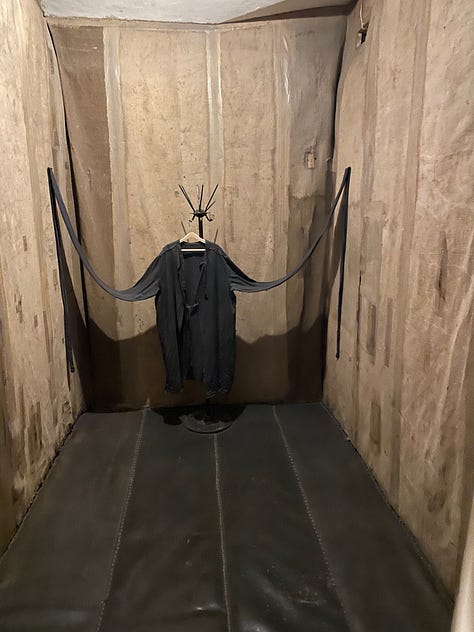
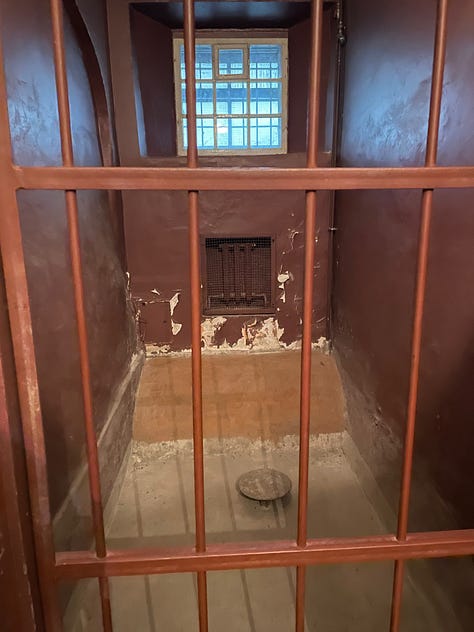
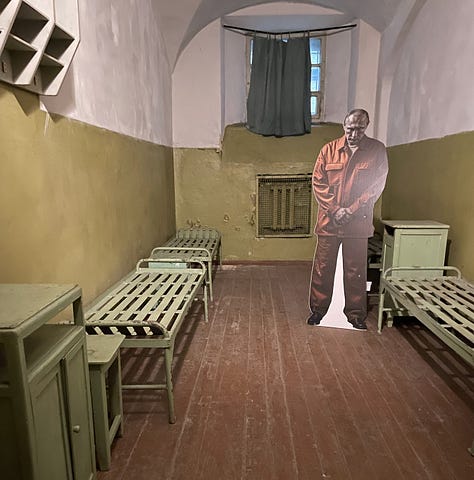
We saw exhibits, prison cells and padded cells with straightjackets. Over 1000 prisoners were executed there between 1944 and the 1960s, a third of them for resisting occupation. The execution room is now a memorial, with objects taken from the mass graves where the corpses were buried. The kids didn’t want to see it. I began to look, and then remembered visiting Dachau in my twenties and never being able to forget what I saw there. I opted out and left.
The last of the above photos was my favorite: Putin in prison garb, locked away in a KGB prison. Which brings me to the final thing I will say about Vilnius…something equally true for the other Baltic countries and Poland. Everywhere we went we saw signs of support for Ukraine: flags, signs, graffiti, offering boxes. Unlike elsewhere in the world, here Russia’s war on Ukraine remains front and center in people’s minds. Part of that is probably proximity. Another part must be that they themselves suffered for years under Russian then Soviet occupation. These people know what is at stake for the people of Ukraine. They have lived through it.
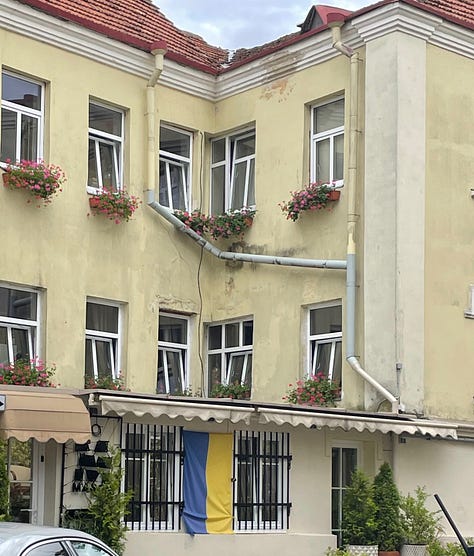

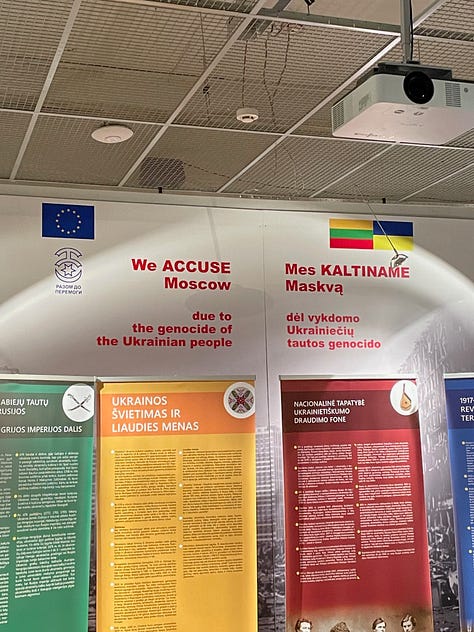

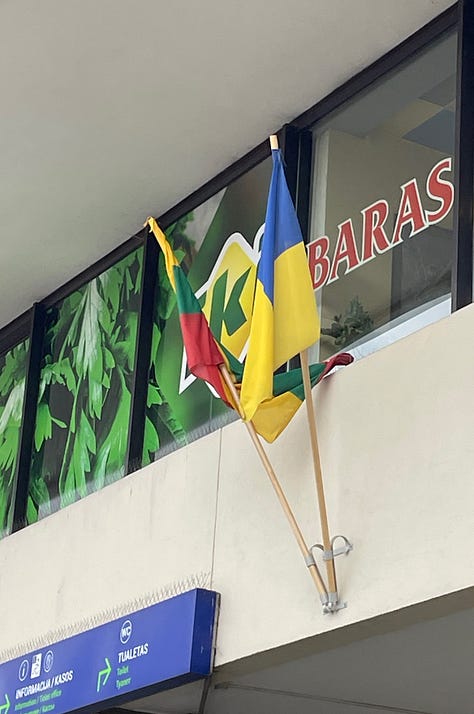
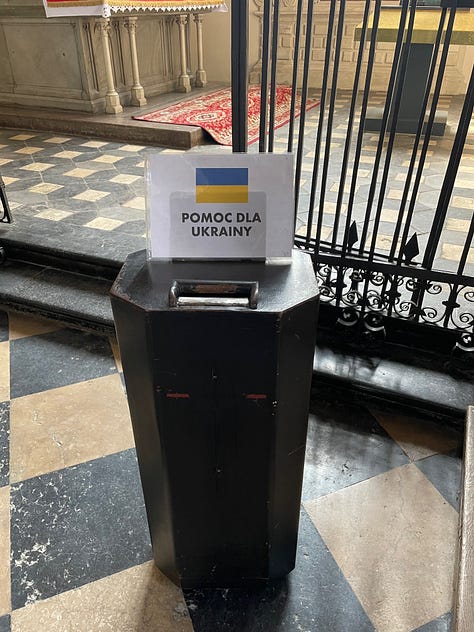
Without planning our itinerary around the theme, in just one day we had witnessed two shrines to the horrors that the Lithuanian people endured at the hands of Soviet Russia. In this country the scars are everywhere. But so is the beauty. And the pride. And don’t forget the dumplings.






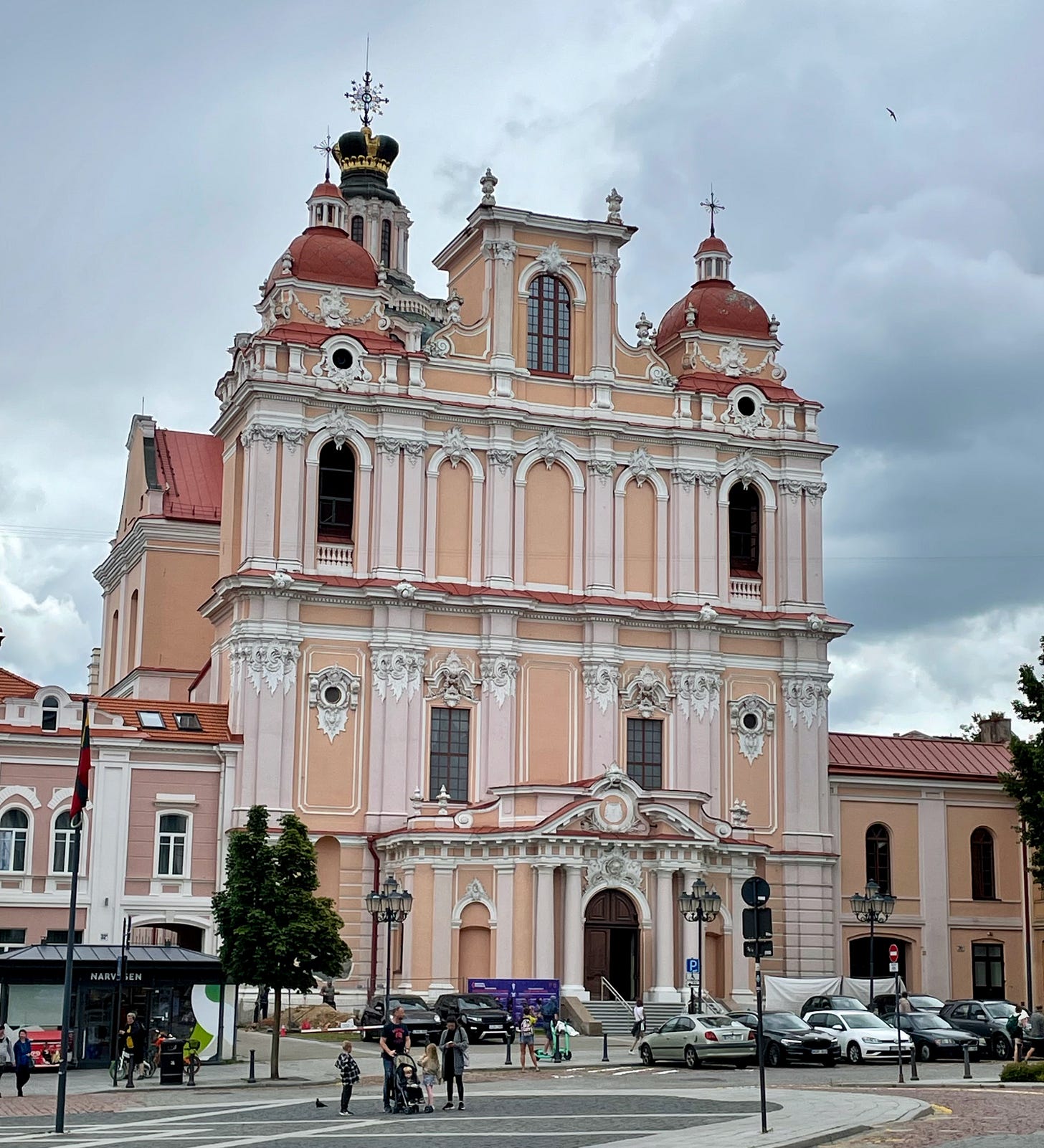
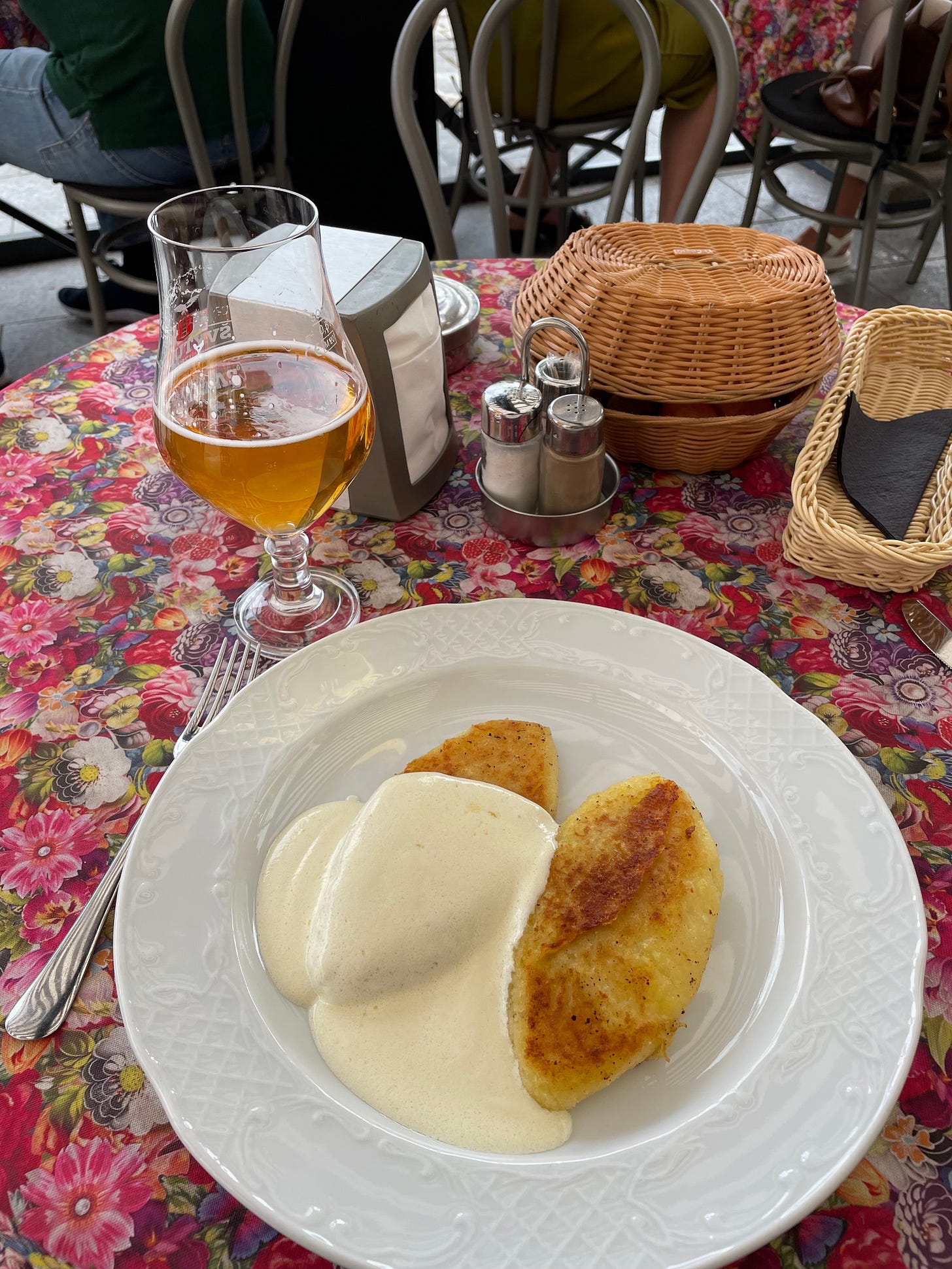
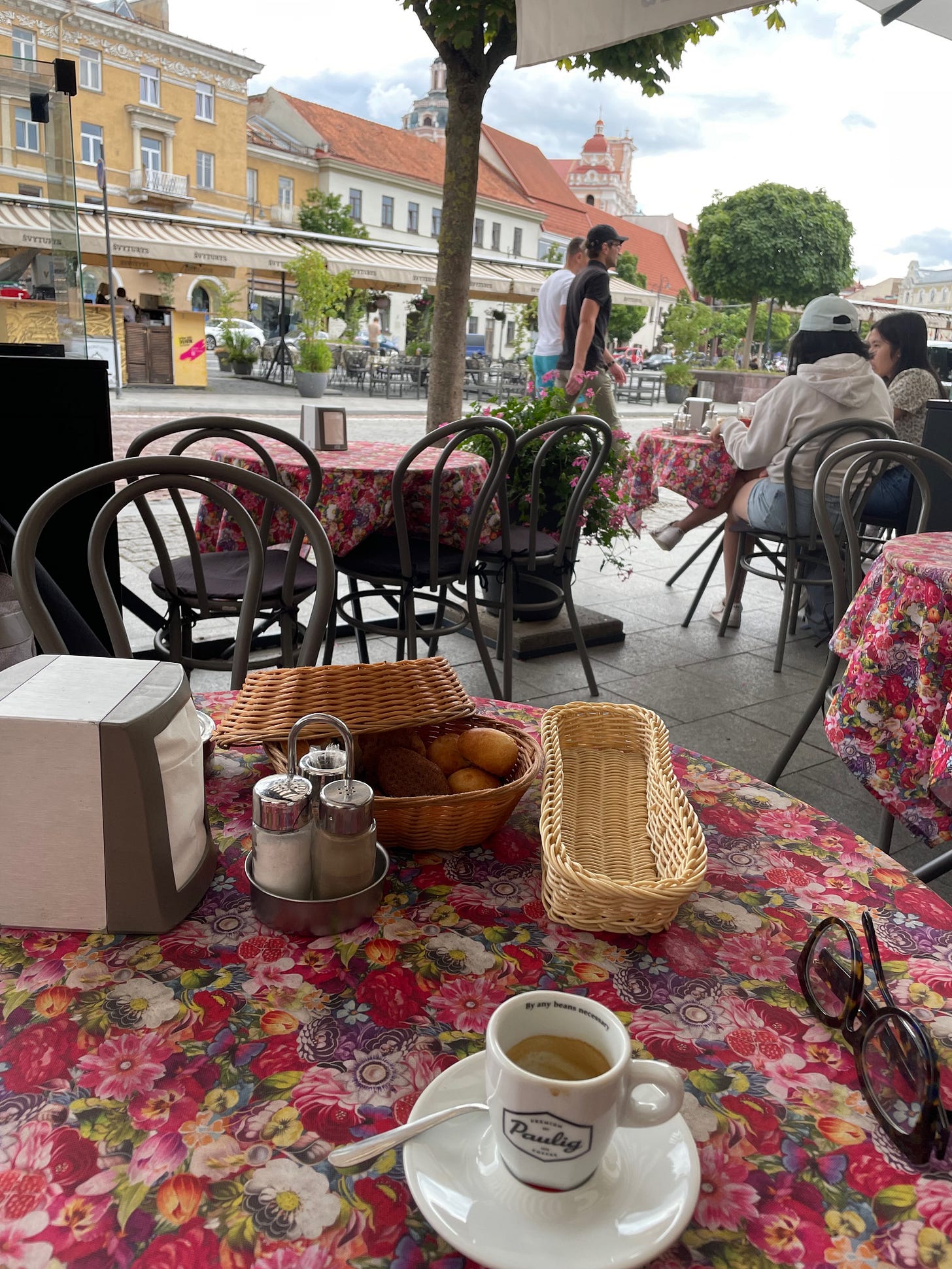
I just finished a lovely morning of reading, catching up on all your adventures! Thank you for sharing!
Beautiful. Slava Ukraini.